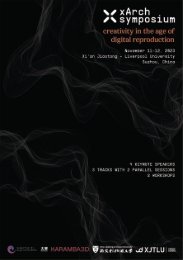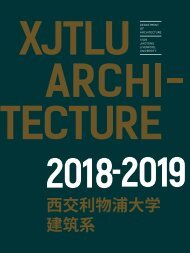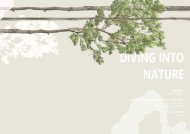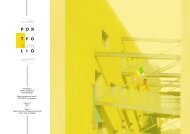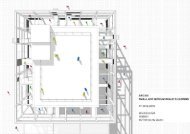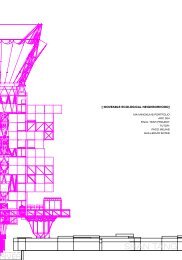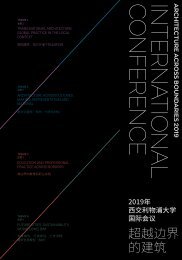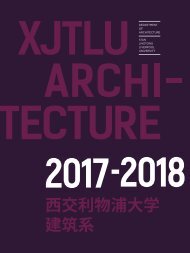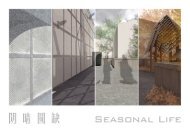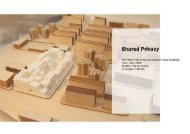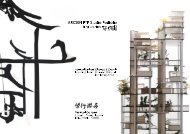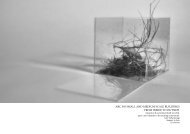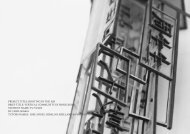YEARBOOK 2016 - 2017 | XJTLU DEPARTMENT OF ARCHITECTURE
The fourth edition of the yearbook of the Department of Architecture at Xi'an Jiaotong-Liverpool University presents student works created during the academic year 2016 - 2017. The yearbook exemplifies the new model for Chinese architectural education for which the department was commended by the Royal Institute of British Architects (RIBA). It is thus also a showcase of the creative culture that has guided our students in taking first steps to successful international careers as responsible and creative architectural designers. XJTLU offers RIBA Part 1, 2 and 3.
The fourth edition of the yearbook of the Department of Architecture at Xi'an Jiaotong-Liverpool University presents student works created during the academic year 2016 - 2017. The yearbook exemplifies the new model for Chinese architectural education for which the department was commended by the Royal Institute of British Architects (RIBA). It is thus also a showcase of the creative culture that has guided our students in taking first steps to successful international careers as responsible and creative architectural designers. XJTLU offers RIBA Part 1, 2 and 3.
You also want an ePaper? Increase the reach of your titles
YUMPU automatically turns print PDFs into web optimized ePapers that Google loves.
031<br />
032<br />
ARC110<br />
Humanities and Architecture<br />
<strong>2016</strong>-<strong>2017</strong> <strong>YEARBOOK</strong> Xi’an Jiaotong-Liverpool University Department of Architecture 西 交 利 物 浦 大 学 建 筑 系<br />
Sample images of the work produced by students during the module.<br />
Level 1<br />
( Year 2 | Semester 2 )<br />
Module Credits<br />
2.5<br />
Module Leader<br />
Glen Wash Ivanovic<br />
Number of Students<br />
229<br />
Humanities and Architecture introduces students to architecture and<br />
the built environment as a broadly humanistic concern, and supports<br />
their future studio work by introducing them to theories and methods<br />
on the relationship between humans and place, aiming not only to give<br />
students more analytical approaches to architecture and design, but also<br />
to emphasise the relationship between architecture, people, and society.<br />
Through the application of theoretical approaches and tools of spatial<br />
analysis students engage with real sites in the city of Suzhou,<br />
understanding architecture, urbanism, space, and the built environment<br />
as subjects crucially connected to the humanities and social sciences,<br />
including geography, sociology, anthropology and history.<br />
In this version of the module students had three routes in Suzhou<br />
available for them to explore. Students had to undertake three different<br />
research projects in their selected route. In their first project they had<br />
to work in groups of four to five students, later progressing to their<br />
individual exercises. Each project familiarises students with specific<br />
theories and methodologies and requires them to apply them in their<br />
chosen route. The results are compiled in the module report: a sort of log<br />
book which collects the student’s work and their reflections on it.<br />
Level 01 – Year 2<br />
B Eng Architecture Programme




